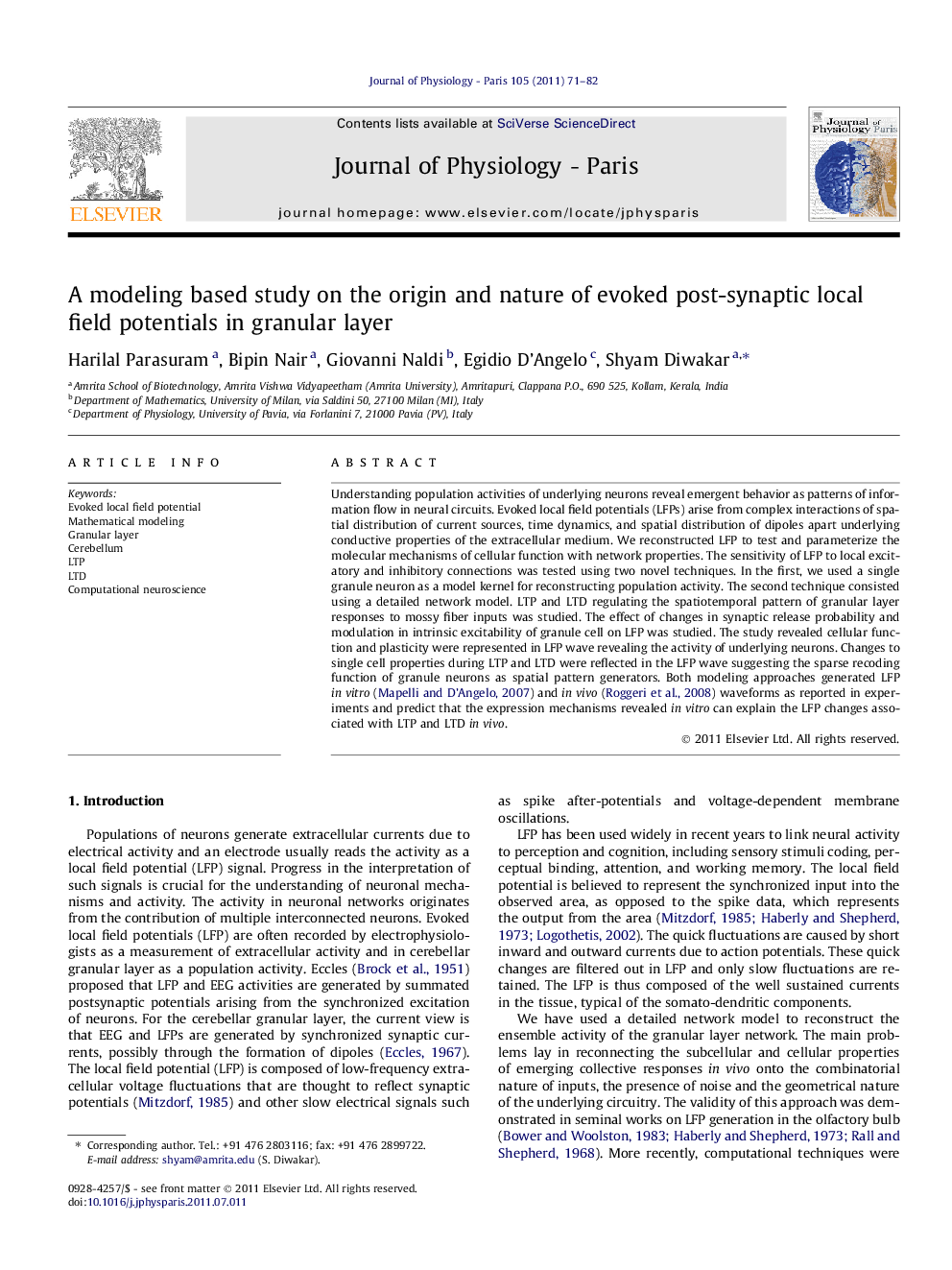| Article ID | Journal | Published Year | Pages | File Type |
|---|---|---|---|---|
| 2842228 | Journal of Physiology-Paris | 2011 | 12 Pages |
Understanding population activities of underlying neurons reveal emergent behavior as patterns of information flow in neural circuits. Evoked local field potentials (LFPs) arise from complex interactions of spatial distribution of current sources, time dynamics, and spatial distribution of dipoles apart underlying conductive properties of the extracellular medium. We reconstructed LFP to test and parameterize the molecular mechanisms of cellular function with network properties. The sensitivity of LFP to local excitatory and inhibitory connections was tested using two novel techniques. In the first, we used a single granule neuron as a model kernel for reconstructing population activity. The second technique consisted using a detailed network model. LTP and LTD regulating the spatiotemporal pattern of granular layer responses to mossy fiber inputs was studied. The effect of changes in synaptic release probability and modulation in intrinsic excitability of granule cell on LFP was studied. The study revealed cellular function and plasticity were represented in LFP wave revealing the activity of underlying neurons. Changes to single cell properties during LTP and LTD were reflected in the LFP wave suggesting the sparse recoding function of granule neurons as spatial pattern generators. Both modeling approaches generated LFP in vitro ( Mapelli and D’Angelo, 2007) and in vivo ( Roggeri et al., 2008) waveforms as reported in experiments and predict that the expression mechanisms revealed in vitro can explain the LFP changes associated with LTP and LTD in vivo.
► Two methods of reconstructing evoked LFP activity in the cerebellar granular layer. ► Predictions of plasticity and role of inhibition and NMDA receptors in vitro. ► In vivo reconstruction shows burst-burst transmission and feed-forward inhibition. ► Simulations show mechanisms regulating plasticity are same, intra and extracellular. ► Granule neurons show role in timing and act as signal-to-noise threshold elements.
